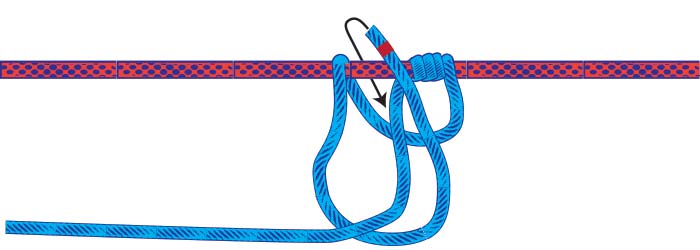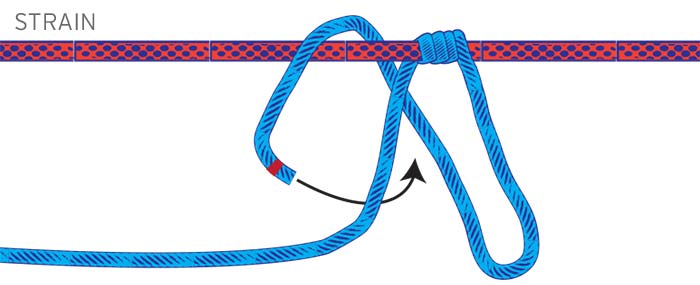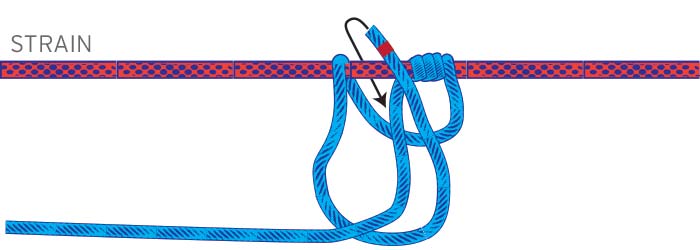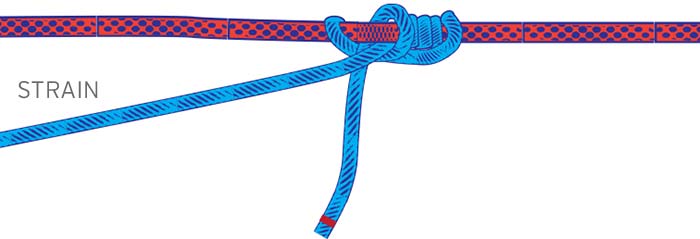Advertisement
Gripping hitches transfer tension from one line to another. Learning one might save your boat someday. It will certainly save your back!

You're anchored on a rope rode with the wind blowing hard when you decide to let more scope out, only to have the rode jam somewhere in the bowels of the anchor locker. You can't free the jam without taking the strain off the anchor line. Yet the anchor line is taut. So what would you do?
The classic solution is to tie another line to the anchor rode and take up the tension on it so you can free the jam. The gripping hitches used for this purpose are designed to grip the line and not slip under load. These hitches can be used in many useful applications, such as: to secure a snubber to an anchor chain, to hold mooring lines while the bitter end is moved between a cleat and a capstan, to remove a riding turn from a winch or windlass, to tension flag halyards, to secure an inner forestay to the mast when not in use, and so on.
The rolling hitch is the simplest and most common of the gripping hitches, and it has been used for millennia aboard seagoing vessels. It was developed for use on chain and large-diameter line with a great deal of friction — hemp or three-strand. On more modern line, which tends to be smaller in diameter and much more slippery, the rolling hitch often slips under load. It may also fail to hold on wire or on stainless steel tubing. For this reason, a variety of other hitches have been developed. These have the advantage of increased holding power, but they are more complicated to learn and to remember when they are needed, and some are difficult to undo after being tensioned up. The table below summarizes how three of these hitches compare and where you might want to use them.
Two tricks will help all of these hitches to grip. First, this is one of the few applications where old line is preferable to new. New line will usually have a soft and slippery finish while older line will have a harder and rougher feel that increases friction. Second, the gripper line should be smaller diameter than the line it’s trying to grip.
If I were to choose one of these hitches to learn and to use in just about every real-world situation, I'd pick the icicle hitch. It holds in every normal situation onboard, is actually easier to untie than the rolling hitch when used with line, and it never jams. But the other hitches have their places, and knowing more than one is smart.
Comparison Of Rolling Hitches
| Type | Time To Tie (sec) | Does Not Hold On: | Ease Of Untying | Recommended Use |
|---|---|---|---|---|
| Rolling Hitch | 10 | Slippery line, small-diameter line, wire stainless steel tube | Moderate | Low load, quick tie |
| Modified Rolling Hitch | 11 | Slippery line, stainless steel tube | Moderate | Moderate load, quick tie |
| Icicle Hitch | 28 | — | Easy | All uses |
Rolling Hitch
This is the simplest and most common of the gripping hitches. Every Boy Scout uses a slight variation of this hitch to secure tent guy lines to tent pegs. It can be easily adjusted by hand but then holds in place under load.

1. Two turns are taken around the line in the direction of the tension, the second inside the first.

2. Then the bitter end doubles back to a hitch taken on the side of the turns away from the strain.

3. The turns and the hitch are all made in the same direction.
Performance: The rolling hitch is the easiest to remember and to tie and untie. However, in tests of gripping hitches, the rolling hitch held only when used on a large-diameter line and it slipped when used on smaller-diameter or slippery line, on wire, or on a greased tube. After it has been tensioned up, it's always a bit difficult to untie, though it usually doesn't require a marlinspike.
Bottom Line: The rolling hitch is the best choice for low loads or easy-to-grip mediums (like chain), being the easiest to remember and to tie and untie. But if you want to be sure your line won't slip, don't rely on the rolling hitch.
Modified Rolling Hitch (Camel Hitch)
This modification to the rolling hitch improves its gripping strength. Used for tying camels, it holds under cycling loads even when wet.

1. Three turns are taken in the direction of the strain.

2. Then two half-hitches are used to finish it off.

3. The camel hitch holds well even with wet line.
Performance: The camel modification to the rolling hitch increases its holding power without greatly increasing its complexity. But it still doesn't hold on slippery single-braid Spectra line. Like the rolling hitch, it takes some time to undo after being tensioned up under high load.
Bottom Line: A good choice for a quick and easy hitch for moderate loads, but the modified camel hitch is not reliable in all situations.
Icicle Hitch
Developed by John Smith to meet the challenge of holding under a lengthwise pull toward the thin end of a tapered spar, the icicle hitch finishes by taking both ends of the line through a jamming hitch to increase holding power.

1. Three turns are taken away from the direction of the strain, then the bitter end crosses under the turns and over the line under tension.

2. Cross under the standing part of the line to form a loop.

3. Take the bitter end over the top of the line under tension and through the loop. Pull tight.
Performance: The icicle hitch took twice as long as the rolling hitch to tie, but it performs better than the rolling hitch, holding in all conditions. Though the hitch may separate a bit as it's tensioned up, it never slipped even with maximum load. This was the easiest hitch to undo after it had been tensioned against line.
Bottom Line: The icicle hitch holds in all situations; its extra holding power and the ease of release more than make up for the slight increase in complexity of this hitch.
